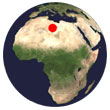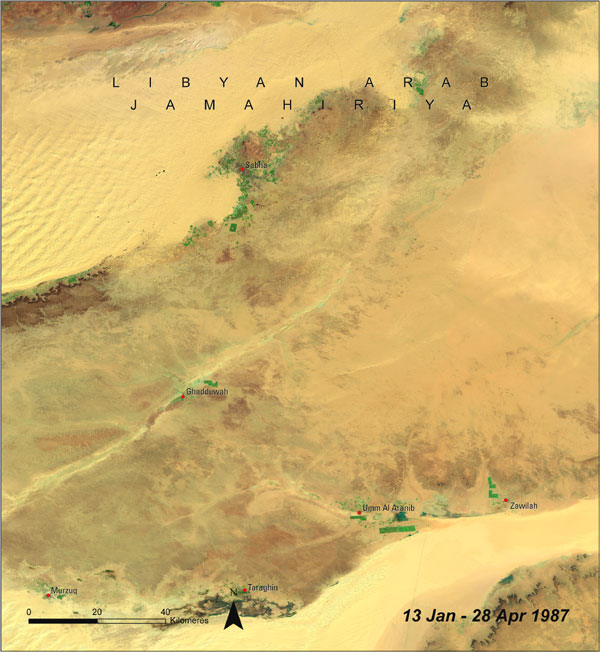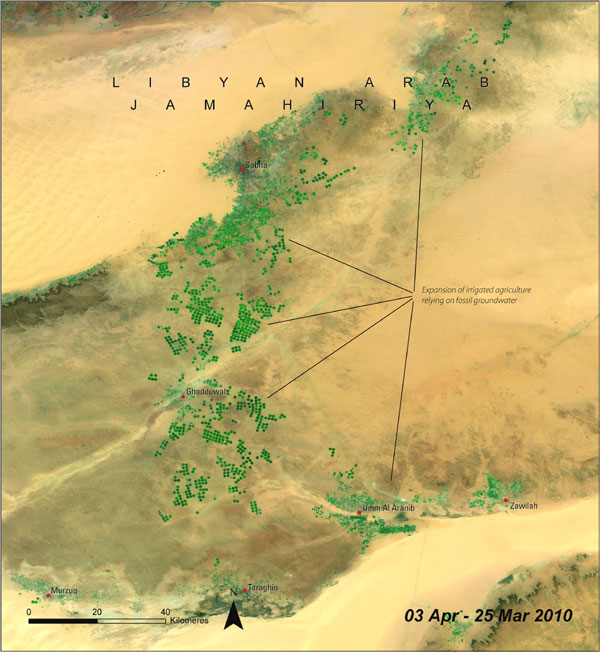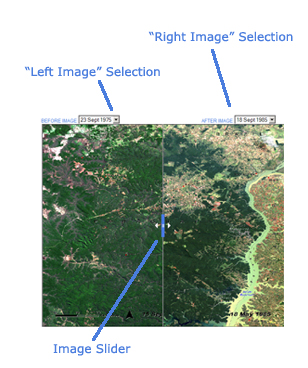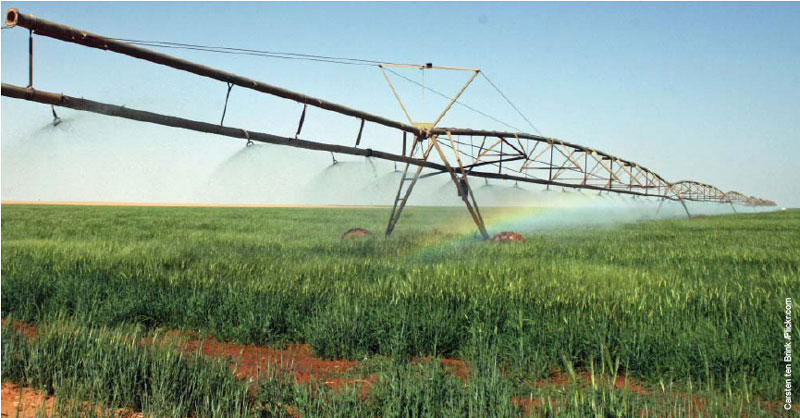Why is this issue important?
Libya relies on groundwater to meet 95 per cent of its water requirements; it is primarily “fossil water” from
non-recharging aquifers such as the Nubian Sandstone Aquifer System, the North-Western Sahara Aquifer
System and the Murzuq Basin Aquifer System (Alker 2008). In the 1960s, the discovery of water in deep aquifers
located under Libya’s southern desert inspired an enormous water transfer scheme—the Great Man-Made River
Project. Begun in the 1970s, the project brings water from well fields in the Sahara to Libya’s settlements, which
are generally concentrated along its northern coast. The system is among the largest civil engineering projects
in the world.
The majority of the system’s water comes from Libya’s two largest groundwater resources—the Murzuq and
Kufra groundwater basins. Located in Libya’s southern desert they hold over two-thirds of Libya’s groundwater
reserves (Alghariani 2007). While the total volume of water in the two aquifers is enormous, neither receives
significant recharge. Heavy usage could draw the water down to levels that would eventually make its extraction
prohibitively expensive (Shaki and Adeloye 2006, Alghariani 2003).
 |
What are the findings and implications?
The satellite image pair (28 April, 1987 and 25 March, 2010) shows the large increase in centre-pivot irrigation on the Murzuq
Basin in southeastern Libya between 1987 and 2010. The water is drawn from the East and North East
Jabal Hasaouna well fields, which abstract around 2 million m2 of water daily from the Murzuq Basin Aquifer
(Abdelrhem and others 2008).
As much as 80 per cent of Libya’s water is used for agriculture, including wheat, alfalfa, vegetables and
fruits (Alghariani 2007). Water and agricultural demands are driven by Libya’s population growth, which was
increasing at just over two per cent a year in 2008, down from five per cent a year in the early eighties (World
Bank 2010). Since the initiation of the project in 1983, the cost of alternative sources of water, particularly
desalinization, has become competitive with water delivered by the Great Man-Made River transfer scheme
(Alghariani 2003) and will likely become less expensive in the foreseeable future.
|
Download Images
References
Abdelrhem, I., Rashid, K., Ismail, A. (2008). Integrated Groundwater management for Great Man-Made River Project in Libya. European
Journal of Scientific Research 22(4):562-569.
Alghariani, S. (2003). Water transfer versus desalination in North Africa: sustainability and cost comparison. Occasional Paper 49, SOAS
Water Issues Study Group, University of London.
Alghariani, S. (2007). Reducing Agricultural Water Demand in Libya through Improving Water Use Efficiency and Crop Water Productivity.
Proceedings of WRM 2007, Honolulu Hawaii.
Alker, M. ( 2008). The Nubian Sandstone Aquifer System. In: Conceptualizing cooperation on Africa’s transboundary groundwater
resources. Ed: Waltina Scheumann and Elke Herrfahrdt-Pähle. German Development Institute. http://www.isn.ethz.ch/ (Accessed on
May 21, 2010)
Ghazali, A. and Abounahia, M. (2005). An Optimum Approach for the Utilization of the Great Man-Made River Water in Libya.
Proceedings Ninth International Water Technology Conference, IWTC9, 2009 Sharm El-Sheikh, Egypt.
Shaki, A. and Adeloye, A. (2006). Evaluation of quantity and quality of irrigation water at Gadowa irrigation project in Murzuq Basin,
southwest Libya. Agricultural Water Management. 84:193-201.
Water Technology.net (no date). GMR (Great Man-made River) Water Supply Project, Libya. http://www.water-technology.net/ (Accessed
on May 21, 2010)
World Bank (2010). World Bank Development Indicators. http://data.worldbank.org/ (Accessed on July 21, 2010)




